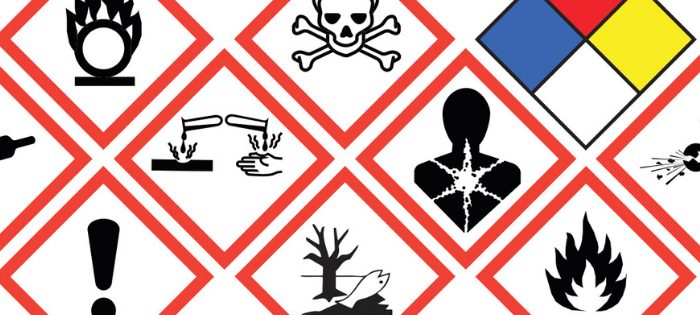The Occupational Safety and Health Administration (OSHA) recently published a final rule revising its Hazard Communication Standard (HCS). This long-awaited update aligns the HCS with the Globally Harmonized System of Classification and Labeling of Chemicals (GHS), Revision 7. This harmonization represents a significant step forward for workplace safety, ensuring a clear and consistent approach to communicating chemical hazards to workers across industries.
Improved Communication for Enhanced Safety
The previous HCS, based on GHS Revision 3, lacked alignment with the current international standards. This inconsistency created confusion for employers and employees alike, potentially hindering the proper identification and mitigation of chemical hazards.
The updated HCS addresses this concern by adopting the latest GHS elements. This includes:
- Standardized Hazard Classification: Chemicals will now be classified under a consistent set of categories, with standardized pictograms and hazard statements on labels. This allows for easier identification of potential dangers, regardless of the manufacturer or location.
- Enhanced Label Content: Labels on hazardous chemical containers will provide more comprehensive information. This includes pictograms, signal words, hazard statements, and precautionary statements. The updated format ensures critical safety data is readily available to workers.
- Improved Safety Data Sheets (SDSs): The revised standard streamlines the format and content of Safety Data Sheets. This will make it easier for workers and safety professionals to locate vital information regarding the safe handling, storage, and disposal of hazardous chemicals.
Benefits for Employers and Workers
The updated HCS offers numerous benefits for both employers and workers. Here are some key advantages:
- Increased Worker Knowledge: The standardized approach will enhance worker comprehension of chemical hazards. This improved understanding empowers workers to make informed decisions regarding safe work practices.
- Reduced Training Costs: The consistent labeling and SDS format can simplify training programs. Employers can leverage the standardized hazard communication elements to deliver more efficient and effective training.
- Improved Compliance: Aligning with the latest GHS revision simplifies compliance for employers who operate internationally. Additionally, the clearer communication of hazards reduces the risk of accidents and potential fines.
- Enhanced Global Trade: The harmonization with the GHS facilitates international trade of chemicals by eliminating confusion regarding classification and labeling requirements.
Implementation Timeline
The final rule takes effect on July 19, 2024. However, OSHA has provided a compliance timeline for employers:
- Chemical Manufacturers, Importers, and Distributors: Compliance with the updated labeling requirements is mandatory by December 1, 2024.
- Employers: Employers with existing hazardous chemicals in their workplaces must update their labels and safety data sheets by December 1, 2026.
However, employers may choose to comply immediately or during a transition period ending on January 19, 2028, for mixtures.
Resources for Compliance
OSHA offers various resources to assist employers in complying with the updated HCS. These include:
- Fact Sheets: OSHA has published comprehensive fact sheets explaining the key changes and providing implementation guidance .
- Compliance Assistance Specialists: Employers can reach out to OSHA’s compliance assistance specialists for personalized guidance.
The updated HCS represents a significant advancement in workplace safety. By adopting the latest GHS revisions, OSHA ensures that workers have access to clear and consistent information about the chemicals they encounter daily. This improved communication empowers workers to make informed decisions and fosters a safer work environment for all. Safety professionals are encouraged to familiarize themselves with the revised standard and leverage its benefits to enhance worker safety within their organizations.


Recent Comments